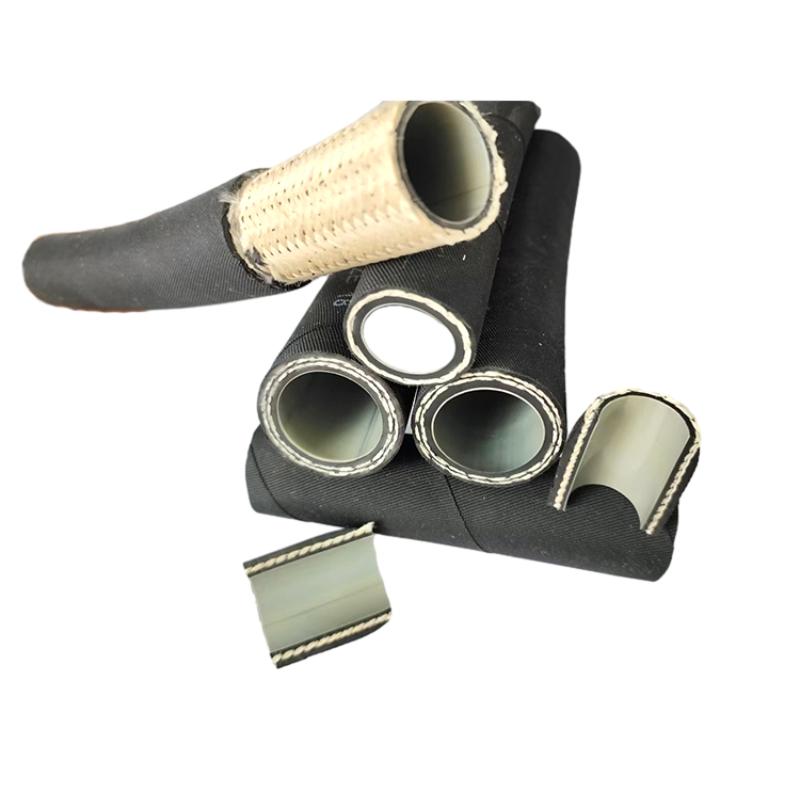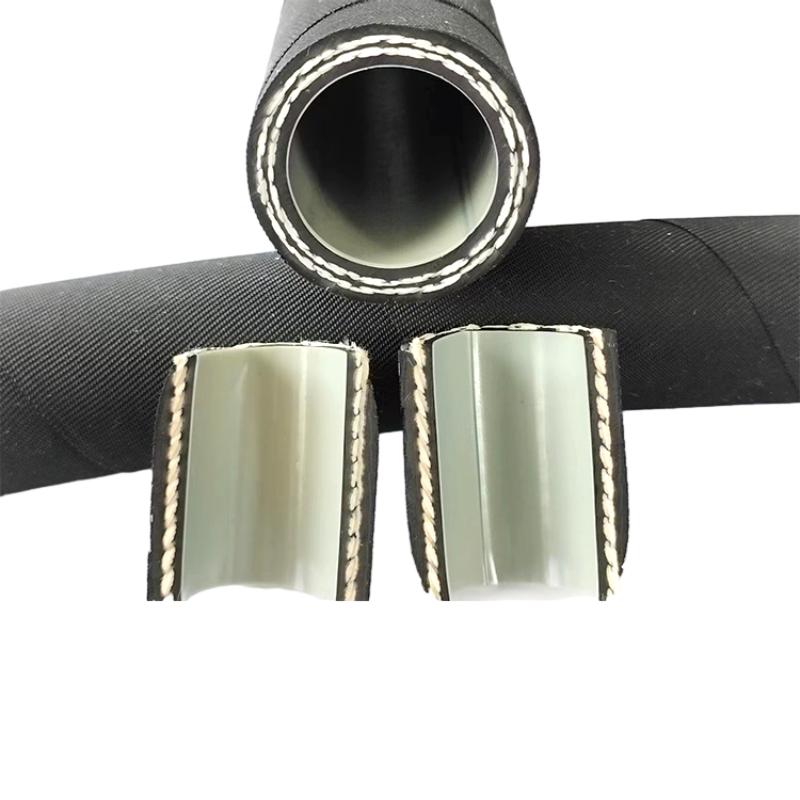Refrigeration Hose-Hebei Kemao Auto Parts Technology Co., Ltd.
កក្កដា . 30, 2025 04:00 Back to list
Refrigeration Hose-Hebei Kemao Auto Parts Technology Co., Ltd.
The Refrigeration Hose is a critical component in modern refrigeration systems, designed to withstand extreme conditions while ensuring efficient fluid transfer. Engineered for durability, safety, and performance, this product is essential for both industrial and automotive applications. This article provides a comprehensive overview of its features, technical specifications, and real-world uses.
Technical Specifications
The refrigeration hose is available in multiple sizes, each tailored to meet specific operational requirements. Below is a detailed specification table for the product:
| Inch | Spc(mm) | I.D(mm) | O.D(mm) | W.T(mm) | Max W.Mpa | Max W.Psi | Max B.Mpa | Max B.Psi |
|---|---|---|---|---|---|---|---|---|
| 5/16'' | 7.9*14.7 | 7.9±0.2 | 14.7±0.3 | 3.4 | 3.5 | 500 | 22.0 | 3000 |
| 13/32'' | 10.3*17.3 | 10.3±0.2 | 17.3±0.3 | 3.5 | 3.5 | 500 | 22.0 | 3000 |
| 1/2'' | 12.7*19.4 | 12.7±0.2 | 19.4±0.3 | 3.4 | 3.5 | 500 | 22.0 | 3000 |
| 5/8'' | 15.9*23.6 | 15.9±0.2 | 23.6±0.3 | 3.9 | 3.5 | 500 | 22.0 | 3000 |
Key Features and Advantages
The Refrigeration Hose is engineered with advanced materials and design principles to deliver superior performance. Its standout features include:
- Low Permeability: Minimizes the leakage of refrigerants, ensuring environmental compliance and system efficiency.
- Pulse-Resistance: Resists pressure fluctuations, enhancing the hose's longevity in dynamic environments.
- Aging-Resistance: Maintains structural integrity over time, even under harsh conditions.
- Ozone Resistance: Prevents degradation from exposure to ozone, a common issue in industrial settings.
- Shock Resistance: Withstands mechanical stress, making it ideal for high-vibration applications.
These features are critical for maintaining the reliability of refrigeration systems, particularly in industries where downtime is costly. According to the National Institute of Standards and Technology (NIST), the accuracy of measurements and the quality of materials directly impact the efficiency and safety of industrial systems. The refrigeration hose aligns with these standards, ensuring compliance with rigorous performance criteria.
Refrigerant Compatibility
The hose is specifically designed for use with Refrigerant R404a, a widely used refrigerant in commercial and industrial refrigeration systems. R404a is known for its excellent thermodynamic properties, making it suitable for low-temperature applications. The hose's construction ensures compatibility with this refrigerant, as well as other liquids such as:
- Diluent
- Xylene
- Solvent Gasoline
This versatility makes the refrigeration hose an ideal choice for a wide range of applications, from automotive power steering systems to industrial fluid transfer.
Applications
The Refrigeration Hose is utilized in various industries, including:
- Automotive: Used in power steering systems to transfer fluids under high pressure and varying temperatures.
- Industrial: Conveys organic solvents and other chemicals in manufacturing and processing equipment.
- Commercial Refrigeration: Ensures efficient operation of refrigeration units in supermarkets, cold storage facilities, and food processing plants.
Its ability to perform in extreme temperatures, ranging from -40°C to +140°C (-40°F to 284°F), makes it suitable for both cold and hot environments. This temperature range is crucial for maintaining the integrity of the hose in diverse operational conditions.
Company Background: Hebei Kemao Auto Parts Technology Co., Ltd.
The Hebei Kemao Auto Parts Technology Co., Ltd. is a leading manufacturer of automotive and industrial components, specializing in high-quality hoses and tubing. With a commitment to innovation and quality, the company adheres to international standards such as SAE J2064 and holds certifications including 3C and DOT. Their products are designed to meet the demanding requirements of modern industries, ensuring safety, reliability, and performance.
Hebei Kemao's dedication to excellence is reflected in their rigorous testing processes and adherence to quality control standards. As highlighted by the NIST, the importance of standardized testing and measurement in manufacturing cannot be overstated. Hebei Kemao's products are a testament to this principle, offering solutions that meet the highest industry benchmarks.
Product Images
Below are images of the Refrigeration Hose to provide a visual representation of its design and construction:



Conclusion
The Refrigeration Hose is a vital component in modern refrigeration and fluid transfer systems. With its advanced technical specifications, robust features, and compatibility with a wide range of refrigerants and solvents, it offers a reliable solution for both industrial and automotive applications. Manufactured by Hebei Kemao Auto Parts Technology Co., Ltd., the product exemplifies the importance of quality, innovation, and adherence to international standards.
As highlighted by the NIST, the integration of precise measurements and high-quality materials is essential for the advancement of technology. The refrigeration hose is a prime example of how these principles are applied to create products that meet the evolving needs of industries worldwide.
References
Latest news
-
Refrigeration Hose-HEBEI KEMO AUTO PARTS TECHNOLOGY CO., LTD|Low Permeability&Ozone Resistance
NewsJul.30,2025
-
Refrigeration Hose-HEBEI KEMO|Low Permeability,Pulse-Resistance
NewsJul.30,2025
-
Refrigeration Hose-Hebei Kemao Auto Parts Technology Co., Ltd.|Low Permeability, High Pressure Resistance
NewsJul.30,2025
-
Refrigeration Hose - HEBEI KEMO AUTO PARTS TECHNOLOGY CO., LTD | Low Permeability, Pulse Resistance
NewsJul.30,2025
-
Refrigeration Hose-Hebei Kemao Auto Parts Technology Co., Ltd.
NewsJul.30,2025
-
Refrigeration Hose-HEBEI KEMO AUTO PARTS TECHNOLOGY|Durability&Temperature Resistance
NewsJul.30,2025
